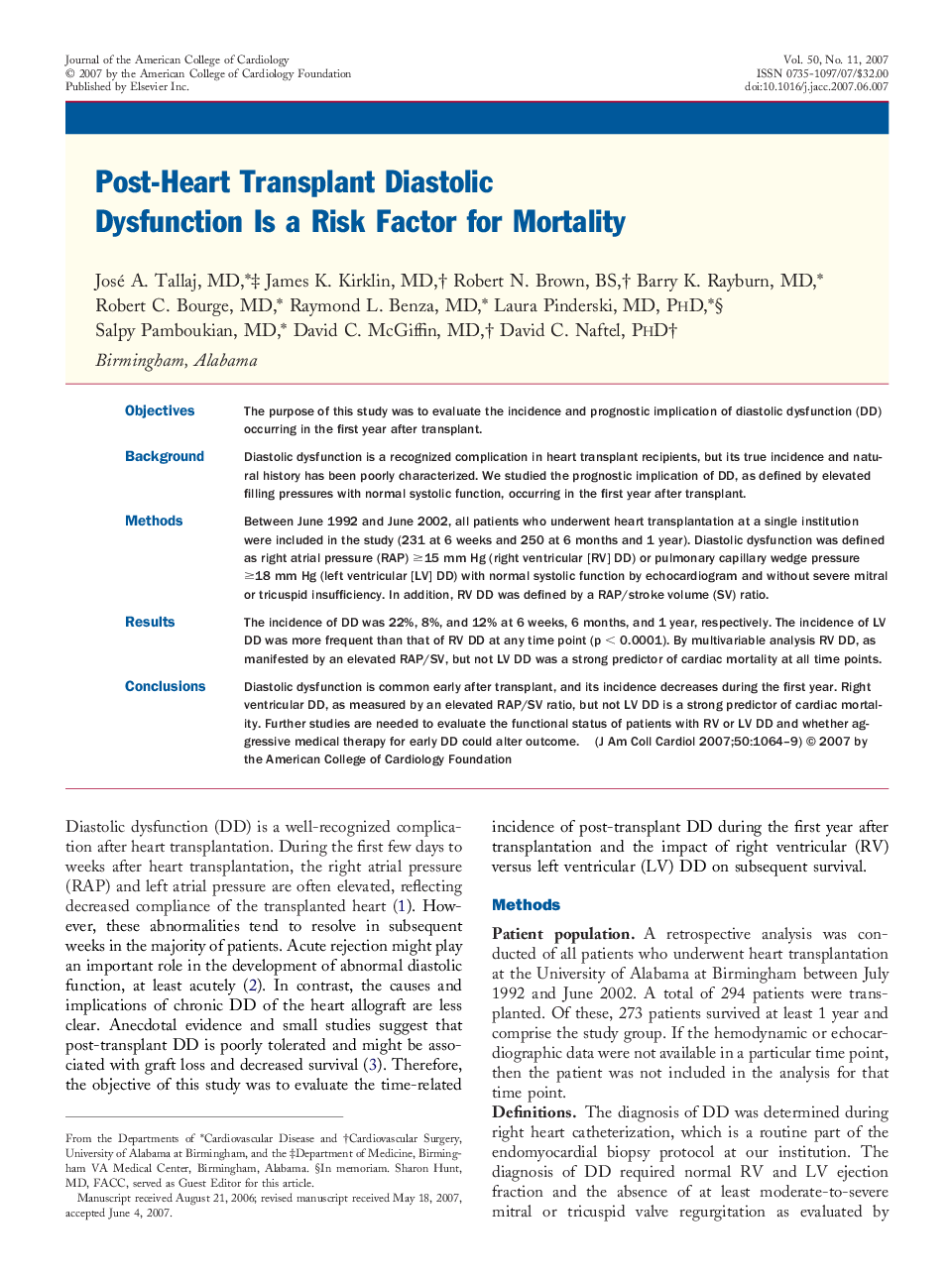| Article ID | Journal | Published Year | Pages | File Type |
|---|---|---|---|---|
| 2952957 | Journal of the American College of Cardiology | 2007 | 6 Pages |
ObjectivesThe purpose of this study was to evaluate the incidence and prognostic implication of diastolic dysfunction (DD) occurring in the first year after transplant.BackgroundDiastolic dysfunction is a recognized complication in heart transplant recipients, but its true incidence and natural history has been poorly characterized. We studied the prognostic implication of DD, as defined by elevated filling pressures with normal systolic function, occurring in the first year after transplant.MethodsBetween June 1992 and June 2002, all patients who underwent heart transplantation at a single institution were included in the study (231 at 6 weeks and 250 at 6 months and 1 year). Diastolic dysfunction was defined as right atrial pressure (RAP) ≥15 mm Hg (right ventricular [RV] DD) or pulmonary capillary wedge pressure ≥18 mm Hg (left ventricular [LV] DD) with normal systolic function by echocardiogram and without severe mitral or tricuspid insufficiency. In addition, RV DD was defined by a RAP/stroke volume (SV) ratio.ResultsThe incidence of DD was 22%, 8%, and 12% at 6 weeks, 6 months, and 1 year, respectively. The incidence of LV DD was more frequent than that of RV DD at any time point (p < 0.0001). By multivariable analysis RV DD, as manifested by an elevated RAP/SV, but not LV DD was a strong predictor of cardiac mortality at all time points.ConclusionsDiastolic dysfunction is common early after transplant, and its incidence decreases during the first year. Right ventricular DD, as measured by an elevated RAP/SV ratio, but not LV DD is a strong predictor of cardiac mortality. Further studies are needed to evaluate the functional status of patients with RV or LV DD and whether aggressive medical therapy for early DD could alter outcome.
